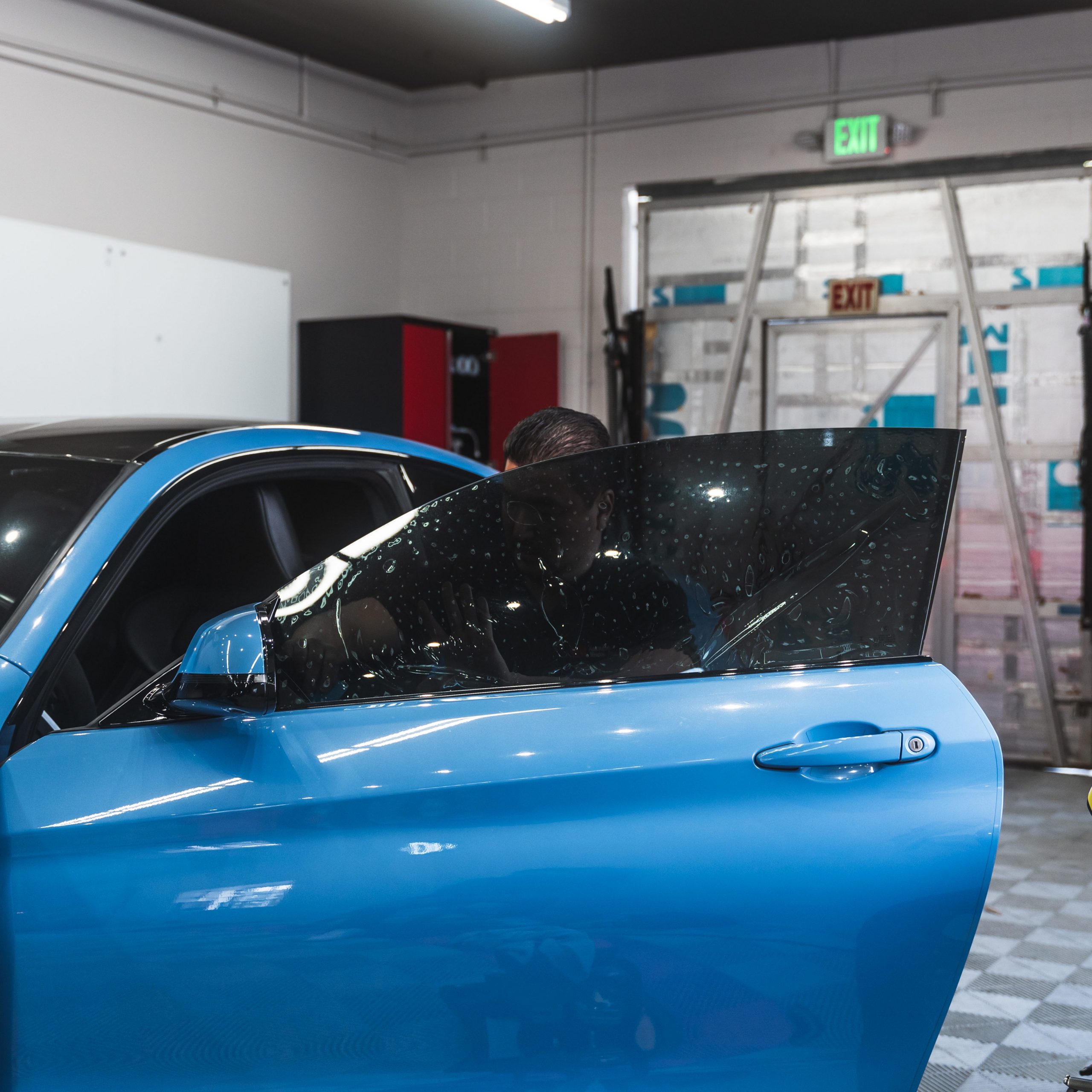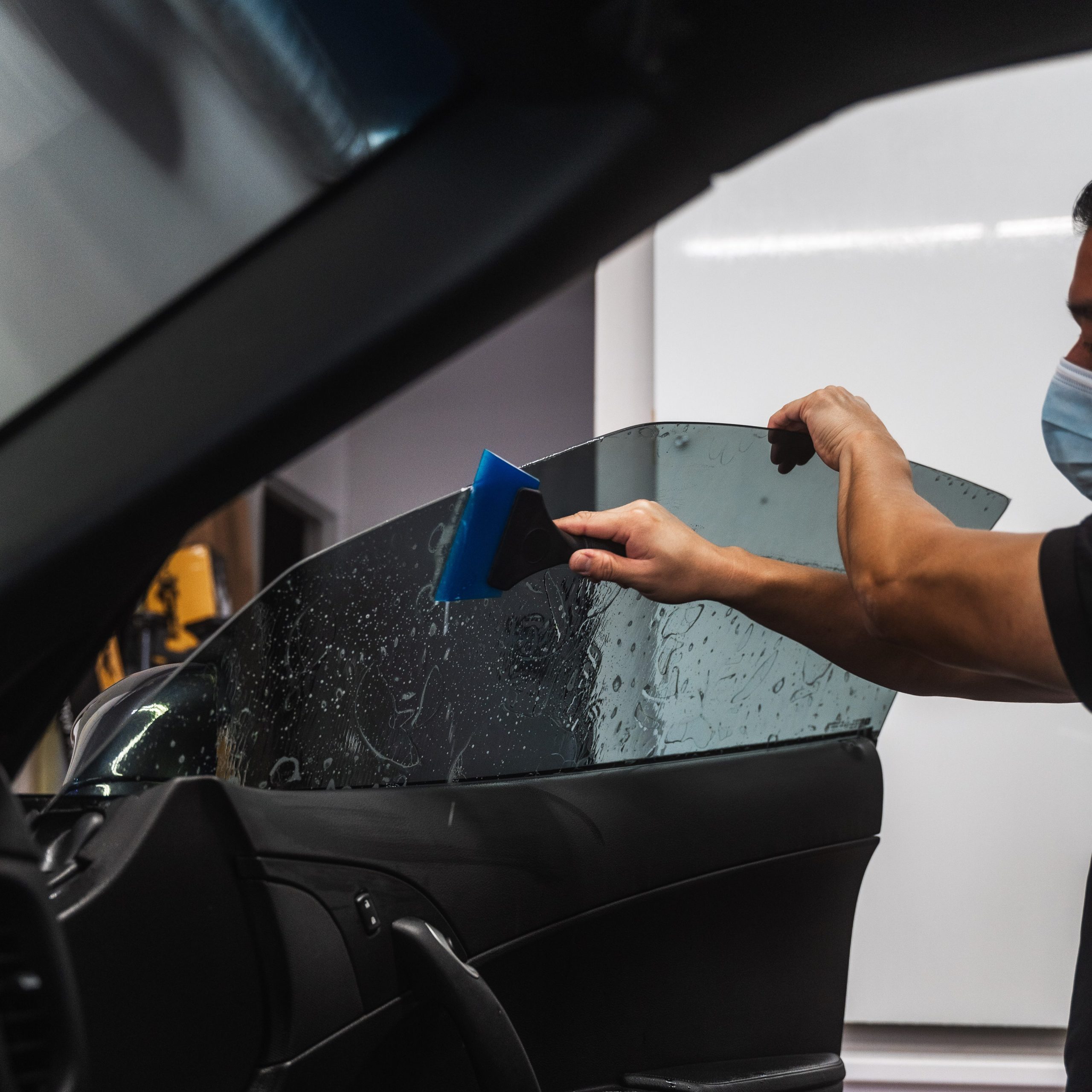
There are MANY options when it comes to tinting your windows; and many of them may be fairly similar. However, we would like to help clear up some of the confusion and misinformation surrounding window tint options. There are significant pros and cons between the different tiers of window tint films which we will break down next.
Why does window tint matter?
Interior sun damage, sun burns, cabin ambient temperature and life expectancy of the film are significant variables between the types of tint. As of late, this is becoming increasingly important to electric vehicle owners due to the correlation of AC usage and battery consumption. Most electric vehicle’s AC performance is arguably relatively poor; and the more AC used, the more battery is being consumed. So it makes sense to get the best performance, heat rejection, tint on the market to squeeze the most out of an electric vehicle.
Types of window tint:
Dye Based Tint
This is your traditional, as cheap as possible, tint option. Dye base tint is where it all started and definitely has its place in the market. These films have MINIMAL heat rejection, typically less than 20% and not extremely durable to UV damage. Have you ever seen a car with purple tint that is all bubbled up and peeling? That is dye base tint after a few years of wear and tear from the sun. Typically these films have lower optical clarity, making them visually hazy when you try to look through them. If this film is applied on the windshield, this can cause headaches, distractions and be generally unappealing to look through. Although we carry dye base film for our non enthusiast clients, we NEVER recommend them to anyone. Get it done right the first time with quality film and never have to worry about replacing it.
Metalized Tint
These films are OUTDATED technology and not needed in today’s marketplace. Metalized films do an okay job of reflecting light / heat and UV penetration but they also cause issues. The metal particles in this film will mess with your key fob, GPS, radio and alarms. There is no reason to still be using this type of film in modern times, if a shop is highly recommending it – RUN!

Carbon Tint
This is a great middle tier option for tinting your vehicle. Carbon film is made up of microscopic carbon fiber particles in the film that are semi-effective at blocking the sun’s powerful rays. On average these films will block 40-50% of heat penetration to the inside cabin, which is good but not great.

Ceramic Tint
NOT ALL CERAMIC TINTS ARE CREATED EQUALLY.
So you want the best of the best for your vehicle, and nothing less will suffice. Look no further than Ceramic Tint, but be careful on which one you choose for your beloved ride. Premium ceramic tint will block 99% of UV penetration and ~85% of heat penetration (even on 70% clear options). This is fantastic for slowing/eliminating UV damage on your interior, sun burns on your skin and keeping the cabin nice and cool. However, some brands skimp out on this level of performance for cheaper price in order to use the ‘ceramic’ buzzword. We have seen (and admittedly carried) “ceramic tint” that only blocked ~35% of heat penetration. This is extremely unfair and misleading to the less informed clients and feels like a scam.
In our shop there is only one ceramic tint that we stand behind and trust, Xpel Prime XR PLUS.
